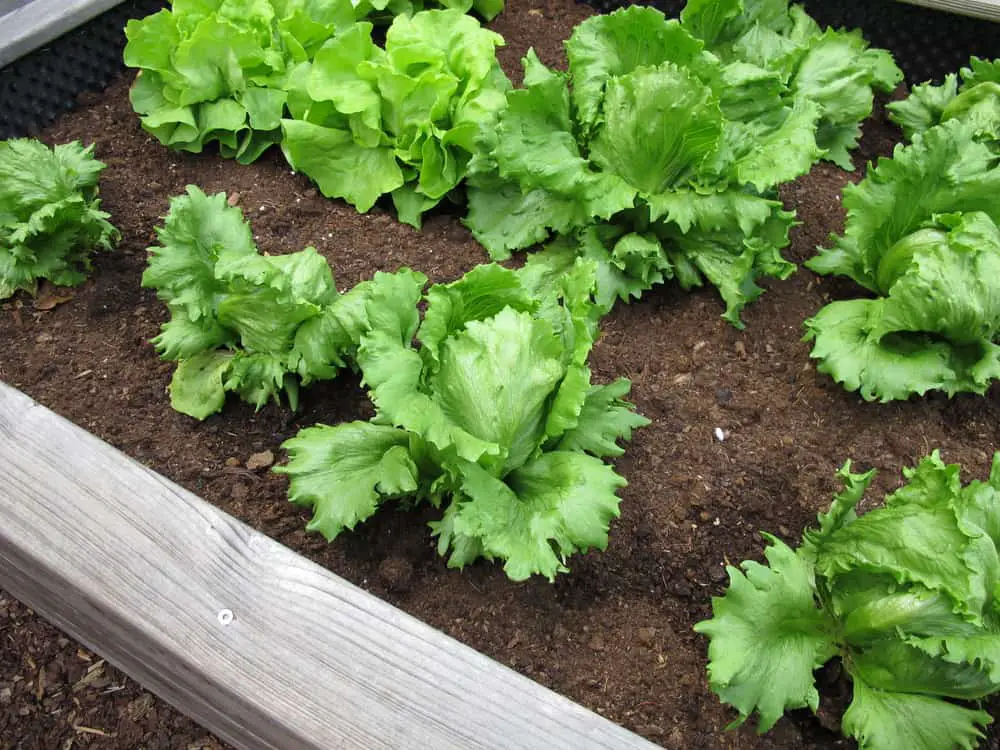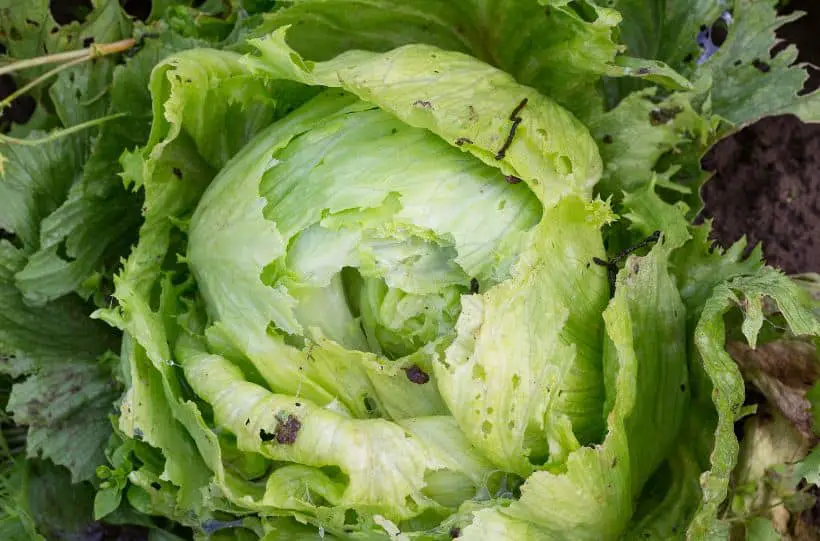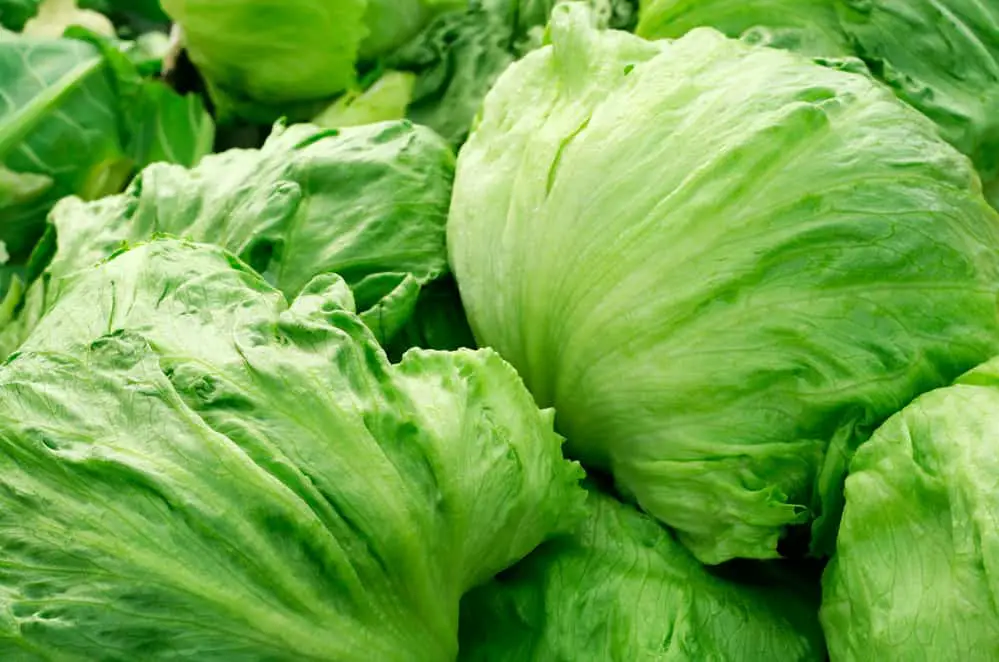Growing and Caring for Iceberg Lettuce in The Garden
Gardening can be a rewarding pastime, offering both physical benefits and the joy of harvesting your own fresh produce. Iceberg lettuce, with its crisp leaves and mild flavor, is a popular choice for many gardeners.
This guide will cover everything a beginner needs to know about growing and caring for iceberg lettuce.

What is Iceberg Lettuce?
Iceberg lettuce, scientifically known as Lactuca sativa, is a variety of lettuce characterized by its spherical head and crunchy, water-rich leaves. It’s a common ingredient in salads, sandwiches, and wraps and is loved for its refreshing taste and texture.
Varieties
There are several popular varieties of iceberg lettuce, each with its own unique characteristics. Varieties such as ‘Crisphead’ and ‘Great Lakes’ are known for their large, dense heads and crisp texture, while others may have slightly different flavor profiles or resistance to certain diseases.
Optimal Conditions for Iceberg Lettuce Growth
Growing iceberg lettuce requires understanding its preferred growing conditions. Here are key factors to consider:
Light Requirements
Iceberg lettuce thrives in full sunlight but can tolerate partial shade. For optimal growth, aim for at least 6 hours of direct sunlight daily.
Ideal Temperature
This cool-season crop prefers temperatures between 55°F (13°C) and 65°F (18°C). Extreme heat can cause the plant to bolt (flower prematurely), leading to bitter leaves.
Soil Preferences
The ideal soil for growing iceberg lettuce is rich, loose, and well-draining, with a neutral pH between 6.0 and 7.0. To improve soil fertility and structure, prepare your garden bed by incorporating organic matter such as compost.

Iceberg Lettuce: Quick Care Guide
| Common Name | Iceberg Lettuce |
| Germination Time | 7-14 days |
| Light | Full sunlight, can tolerate partial shade |
| Water | Consistent moisture, avoid wetting leaves |
| Temperature | 55°F to 65°F |
| Humidity | Moderate-high humidity |
| Soil | Rich, loose, well-draining, pH 6.0-7.0 |
| Fertilizer | Balanced, slow-release at planting, nitrogen-rich mid-season |
How to Care for Iceberg Lettuce
To ensure a bountiful harvest, follow these care guidelines:
Watering
Iceberg lettuce requires consistent moisture to develop its crisp heads. Water the plants deeply but infrequently to encourage strong root growth, avoiding wetting the leaves to reduce the risk of disease.
When watering iceberg lettuce, aim to keep the soil consistently moist but not waterlogged. Consider using drip irrigation or watering at the base of the plant to avoid wetting the leaves, which can increase the risk of disease. Water in the morning to allow foliage to dry before evening, reducing the risk of fungal infections.
Fertilization
Use a balanced, slow-release fertilizer at planting and side-dress with a nitrogen-rich fertilizer midway through the growing season to support leafy growth.
Routine Maintenance and Care
Mulch around the plants to retain soil moisture and regulate temperature. Thin seedlings early to allow ample room for head development and keep the garden bed weed-free.
Potential Problems and Troubleshooting
Even with proper care, iceberg lettuce may encounter some challenges. Here are common problems you might encounter and how to address them:
Tipburn: This condition occurs when the edges of the leaves turn brown due to a calcium deficiency or inconsistent watering. Ensure adequate calcium levels in the soil and maintain consistent moisture levels to prevent tipburn.
Downy Mildew: Downy mildew is a fungal disease characterized by yellowing or browning of leaves and a fuzzy, gray growth on the undersides. Improve air circulation by spacing plants adequately and avoid overhead watering. Consider applying fungicides labeled for lettuce if the infection is severe.

Aphids, Slugs, and Caterpillars: These pests can damage lettuce leaves and reduce yield. Control aphids by spraying them off with a strong stream of water or applying insecticidal soap. Use beer traps or diatomaceous earth to deter slugs, and manually remove caterpillars.
Additionally, practicing good garden hygiene, such as removing debris and weeds, can help reduce pest populations. Encouraging natural predators like ladybugs and lacewings can also help keep pest populations in check, so consider planting companion flowers that attract these beneficial insects.
Bolting: Bolting occurs when lettuce plants prematurely produce flower stalks, resulting in bitter-tasting leaves. To prevent bolting, ensure consistent moisture and provide shade during hot weather. Consider planting heat-tolerant varieties or providing afternoon shade to prolong the harvest period.
Poor Head Formation: Inadequate spacing or nutrient deficiencies can result in undersized or misshapen heads. Thin seedlings early to allow sufficient room for head development, and amend the soil with compost or balanced fertilizer to provide essential nutrients.
By promptly identifying and addressing these issues, you can maximize the health and productivity of your iceberg lettuce crop.
Companion Planting
Companion planting can benefit iceberg lettuce by attracting beneficial insects and deterring pests. Consider planting herbs like dill or cilantro, which can attract beneficial insects like hoverflies and parasitic wasps. Marigolds are also a good companion plant, as they repel pests such as nematodes and attract pollinators.
Season Extension
To extend the growing season, consider using row covers or planting in containers that can be moved indoors during colder weather. Additionally, planting heat-tolerant varieties and providing shade during the hottest part of the day can help prevent premature bolting and extend the harvest period.
Harvesting Your Iceberg Lettuce Heads

Iceberg lettuce is typically ready to harvest 65 to 80 days after planting. Harvest in the morning when the leaves are most crisp. Cut the head at the base, leaving a few outer leaves to protect it.
Iceberg lettuce can typically be stored in the refrigerator for up to two weeks. However, it’s best to consume it as soon as possible for optimal freshness and flavor.
Check the lettuce heads regularly for any signs of spoilage, such as wilting or discoloration. Remove any damaged leaves promptly to prevent them from affecting the rest of the head.
Recipes and Serving Suggestions
Iceberg lettuce’s crisp texture and mild flavor make it a versatile ingredient in various dishes. For a classic option, try a traditional Caesar salad featuring crisp iceberg lettuce leaves, creamy dressing, Parmesan cheese, and croutons.
For a lighter option, create refreshing lettuce wraps by filling iceberg lettuce leaves with your choice of protein, such as grilled chicken or tofu, along with vegetables and a flavorful sauce. Additionally, iceberg lettuce adds crunch and freshness to sandwiches and burgers; layer it with your favorite fillings for a satisfying meal.
By following the guidelines in this guide, even novice gardeners can successfully grow and enjoy their own iceberg lettuce.

